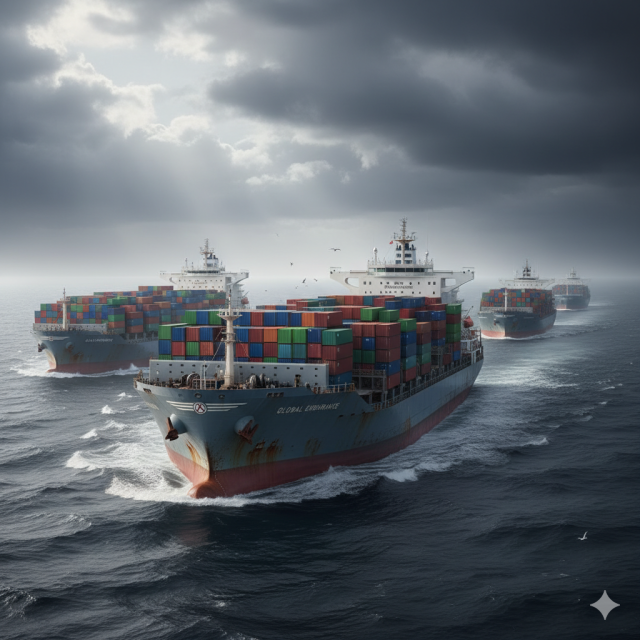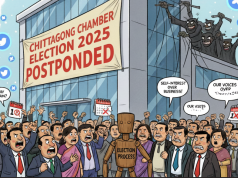From Our Staff Correspondent, Chattogram: Worldwide, over 500 container ships are officially classified as “ready for scrapping,” yet many of them continue to carry cargo across the seas. Despite their advanced age, corrosion, and wear, these vessels remain in active service, highlighting a new reality in the global economy, market dynamics, and the complex calculations of changing trade conditions. The shipping industry, still navigating post-COVID volatility and fluctuating international trade, is placing significant operational pressure on these older ships.
Slow Pace of Scrapping:
According to international analysts BIMCO and Clarksons Research, while the scrapping rate for older container ships has increased slightly, progress remains slow. Earlier projections suggested that by August 2025, in a sluggish shipping market, scrapping might be the only positive development.
Brokerage firm Braemar reports that recently only 14 vessels were actively being considered for scrapping. While a small number, it indicates slight movement away from stagnation. Many shipowners remain reluctant to retire older vessels because they still generate some profit. Although competition has increased due to the supply of new ships, these older ships continue to operate, extending their working life.
Pressure from New Rules and Costs:
The ‘Hong Kong Convention,’ effective June 2025, brings major changes to the ship-breaking industry. The regulation enforces strict standards for hazardous materials and waste management. Ships without environmentally compliant certification must now be scrapped, and compliance costs have risen sharply.
GMS, the world’s largest ship scrapping buyer, is training over 10,000 workers in India, Bangladesh, and Pakistan to meet new international standards. While safety has improved, costs have risen substantially, leaving many owners hesitant. If a ship still generates modest profit, the expense of scrapping under the new regulations can be prohibitive.
Oversupply and Limited Demand:
Global container shipping capacity has grown steadily. While an average of 247,000 TEU capacity ships are scrapped annually, the world fleet is projected to exceed 31.4 million TEU in 2025. In contrast, commercial demand is increasing by only 4 percent, creating a significant imbalance.
To manage this oversupply, shipping companies are adopting strategies such as canceling voyages, deliberately slowing down ships (“slow steaming”), or taking longer routes via the Cape of Good Hope instead of the Suez Canal. These tactics allow surplus vessels to remain operational for longer periods.
Human and Economic Realities:
Each ship involves crews, owners, and thousands of shipyard workers whose livelihoods depend on its operation. Scrapping a vessel represents not only the loss of economic assets but also potential job losses.
Shipyards in South Asia are now complying with stricter environmental and safety standards, further increasing costs. Consequently, many shipowners are waiting for market conditions to improve or for scrapping expenses to stabilize before retiring old ships.
The aging vessels still at sea today are a stark reflection of the global shipping reality—where economic pressures, new environmental regulations, and human considerations create a complex balance that determines which ships will continue to sail and which will meet their final journey at the scrapyard.











